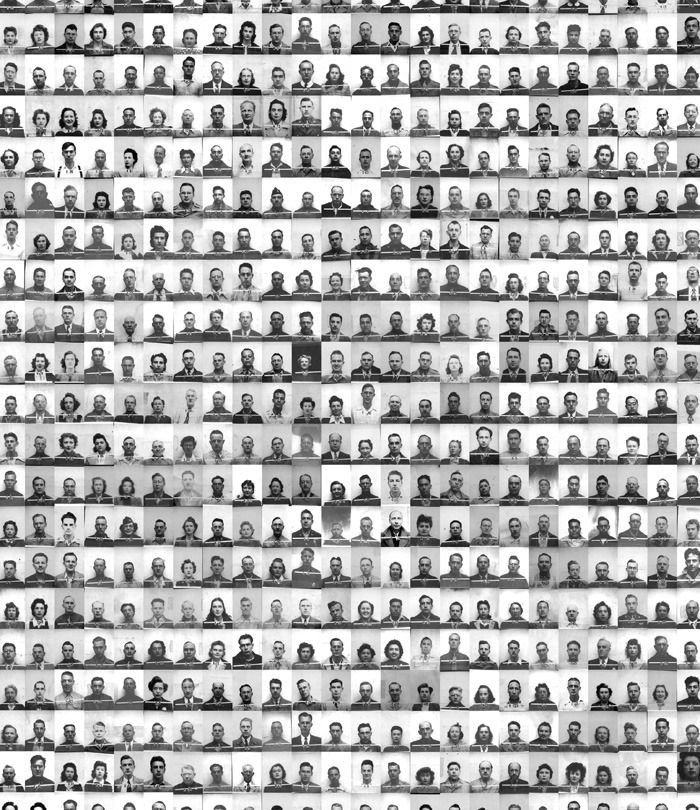The faces that made the Bomb
Bulletin Staff | June 19, 2013
“Project Y,” as the Los Alamos National Laboratory was known during its World War II days, looms large in the popular understanding of the atomic bomb. Even though it was but one site in the overall Manhattan Project empire, and not the most populous or expensive site by a long-shot, its combination of scientific luminaries, mysterious secrecy, and the weightiest questions relating to the manufacture and use of the first nuclear weapons have made it a subject of not only dozens of serious works of history, but also films, novels, plays, and even an opera.
Every staff member at Los Alamos was required to wear a badge, which was far more than a simple identifier: It was also a marker of who could go where and talk to whom, even within the barbed wire fences of the laboratory. During World War II, almost one out of every thousand Americans—130,000 people out of a population of 140 million— were involved in the Manhattan Project. Los Alamos was only a small portion of that number, but it still employed more than 2,500 staff members at its wartime height.
In retrospect, portraits of the people who made the bomb are surprisingly intimate. On their faces, posed for the purposes of security, not art, it is tempting to read in what is known about their life histories. Are J. Robert Oppenheimer’s haunted eyes and uncharacteristic lack of a smile signs of the heavy burdens he carried, a chafing under the requirements of security, an irritation at the photographer, or nothing at all? Does Richard Feynman’s wicked grin reflect his rebellious nature, or mask the personal struggles he hid from his colleagues? And what of the many photographs of women and non-whites, which show the limits of the standard American story, the one that focuses almost exclusively on the white, male physicists?
Above is a carefully curated selection of some of the lesser-known stories of the people at Los Alamos, mixing the well-known with the obscure, treating each seriously as the faces that made the bomb.
